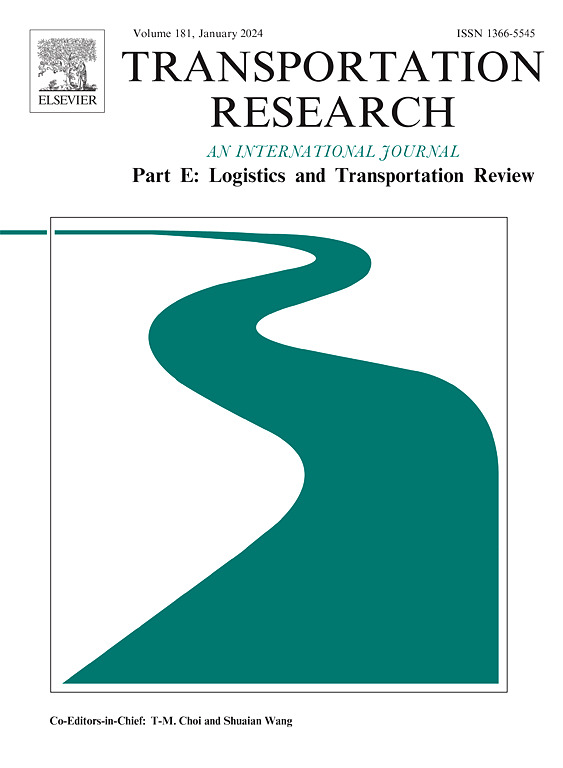PTB: A deep reinforcement learning method for flexible logistics service combination problem with spatial-temporal constraint
IF 8.3
1区 工程技术
Q1 ECONOMICS
Transportation Research Part E-Logistics and Transportation Review
Pub Date : 2025-01-30
DOI:10.1016/j.tre.2025.103978
引用次数: 0
Abstract
The Fourth Party Logistics Service platform aims to provide customers with one-stop logistics services by combining logistics services from different logistics service providers. However, it is an important challenge to quickly build the logistics service combination with the maximum overall profit under the premise of satisfying spatial–temporal constraints. The traditional heuristic algorithm has the problem of low computing efficiency and insufficient adaptability to dynamic environment and demand uncertainty when dealing with the problem of large-scale logistics service combination with spatial–temporal constraints and uncertainty of service. Therefore, we propose the Proximal policy optimization algorithm integrating the Transformer network and the Bayesian networks (PTB). Firstly, a variable length sequence module based on the greedy strategy is used in the environment to generate the status information of the order, to solve the problem that the traditional reinforcement learning environment cannot handle any number of service providers. Then, a policy network integrating the Transformer and Bayes network is used to further optimize the accuracy and reliability of scheduling decisions. Meanwhile the PPO algorithm is used to update the network and constantly optimize the scheduling decisions of agents. Finally, the experimental results on four sets of logistics order scenes show that PTB can effectively solve the logistics service combination problem with spatial–temporal constraints, and the results of most logistics service combination tasks are better than other baseline models, and in large-scale order scenes, it has far more computational efficiency than the traditional heuristic algorithm, and shows good generalization ability.
求助全文
约1分钟内获得全文
求助全文
来源期刊
CiteScore
16.20
自引率
16.00%
发文量
285
审稿时长
62 days
期刊介绍:
Transportation Research Part E: Logistics and Transportation Review is a reputable journal that publishes high-quality articles covering a wide range of topics in the field of logistics and transportation research. The journal welcomes submissions on various subjects, including transport economics, transport infrastructure and investment appraisal, evaluation of public policies related to transportation, empirical and analytical studies of logistics management practices and performance, logistics and operations models, and logistics and supply chain management.
Part E aims to provide informative and well-researched articles that contribute to the understanding and advancement of the field. The content of the journal is complementary to other prestigious journals in transportation research, such as Transportation Research Part A: Policy and Practice, Part B: Methodological, Part C: Emerging Technologies, Part D: Transport and Environment, and Part F: Traffic Psychology and Behaviour. Together, these journals form a comprehensive and cohesive reference for current research in transportation science.

 求助内容:
求助内容: 应助结果提醒方式:
应助结果提醒方式:


